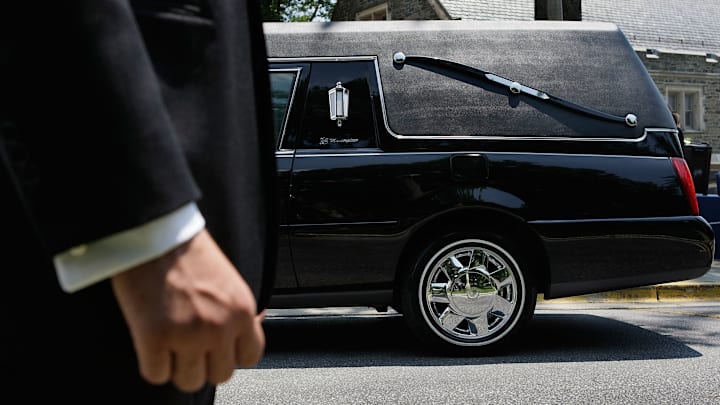If you’ve ever been to a funeral (or behind the procession of one on the road), you’ve probably seen a hearse—and perhaps you’ve noticed that the vehicle usually doesn’t have windows in the back. Instead, there are S-shaped bars where the windows should be. What gives?
Those diagonal irons on the rear quarter panel of hearses are called “landau bars.” They’re purely decorative today, but they once served a purpose and are now in place as a nod to history.

The landau carriage was invented in the mid-18th century. According to the Oxford English Dictionary, they got their name from “a town in Germany where the vehicle was first made. The German name is landauer, short for landauer wagen.”
Lightweight and suspended on elliptical springs, this four-in-hand coach was a precursor to today’s convertible cars in that it had a collapsible roof. The soft folding top on the original model was divided into two sections, front and rear, which were latched in the center. An elongated external hinge mechanism was necessary to support the folding roof, and since the pricey landau was designed as a luxury vehicle for the upper classes, designers added the elegant S-shaped scroll to the utilitarian hinges to make them more aesthetically appealing.

Early horse-drawn hearses were carriages that often featured fully functional landau bars. Before World War II, American automobile hearses borrowed the landau bar flourish as an homage and an attempt to add a touch of Old-World “class.” Over the years the landau bars became so ingrained in the public’s mind as a symbol of a funeral car that most hearse manufacturers still tack them onto their limousines as a matter of tradition.
By the way, don’t be surprised if you hear a funeral director use the word coach rather than hearse to refer to the vehicle transporting a casket—as Jessica Mitford wrote in The American Way of Death Revisited, this was just one change to funeral-related language in the 20th century. Other terms that got phased out were morgue (the suggested replacement was preparation room) and undertaker (replaced by funeral director or mortician).
Discover More Fascinating Big Questions:
A version of this story ran in 2015; it has been updated for 2024.
